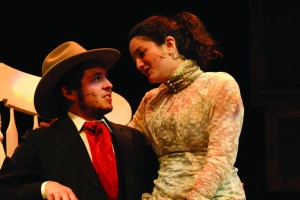By Chris McCree
Writer
The women’s cross country team fell just short of claiming its second straight Patriot League title with a second-place finish this past Saturday in Easton, Pa. The Bison were edged out 42-64 by Colgate. They have now finished in the top two in each of the last six years.
“The team is a little disappointed about the second place finish this weekend. Because we have won four of the last five Patriot League Championships, it was tough to be runner-up,” Stephanie Fulmer ’12 said.
The team’s top five runners all finished in the top 20, and three were named to all-conference teams. Fulmer finished first for the Bison, claiming sixth overall with a time of 20:36, closely followed by Sarah Moniz ’11, who claimed seventh with a time of 20:41. Both were given First Team All-Patriot League honors, Fulmer claiming these honors for the third time and Moniz for the second.
“Being selected as First Team All-Patriot League for the third year in a row is definitely not something to take for granted. I have had adversities to overcome every year, but have had the support of my team to help me through. This is a very great honor and shows the consistency of coach Donner’s training,” Fulmer said.
Alysha Hooper ’12 claimed Second Team All-Patriot League honors for the first time in her three year career with her14th-place finish and overall time of 21:16. Rounding out the top five for the Bison were Alaina Chodoff ’11 and Caroline Tolli ’13 who finished 18th and 19th respectively.
“I felt as though our team ran very well. We each gave the best effort that we could for that day, and followed our individual race plans,” Fulmer said.
The Bison have finished either first or second in 12 of the last 14 years.
“We got beat by a team that has truly risen to their potential this year and has two possible candidates to qualify for Nationals in their region. Overall, Bucknell has been the most consistent team within the past decade and while it is disappointing to finish as runner-up, it is still a great honor,” Fulmer said.
Now finished with their Patriot League schedule, the team looks ahead to Nov. 13 when it heads to Penn State to compete in the NCAA mid-Atlantic Championships.
“The team performed well this weekend and we are now looking forward to chasing down Penn State at Regionals in two weeks,” Moniz said.




